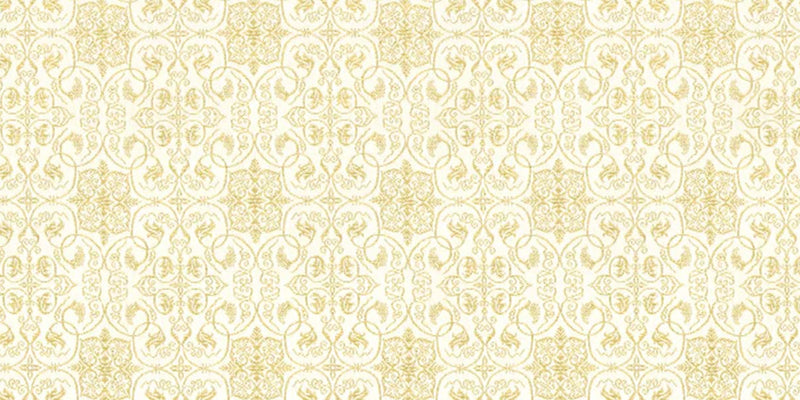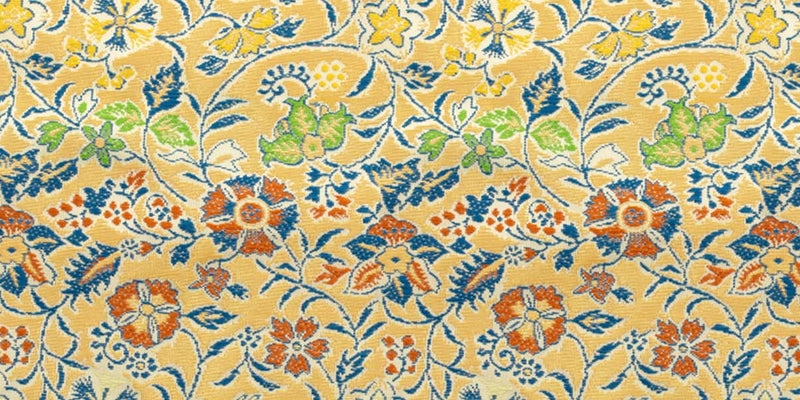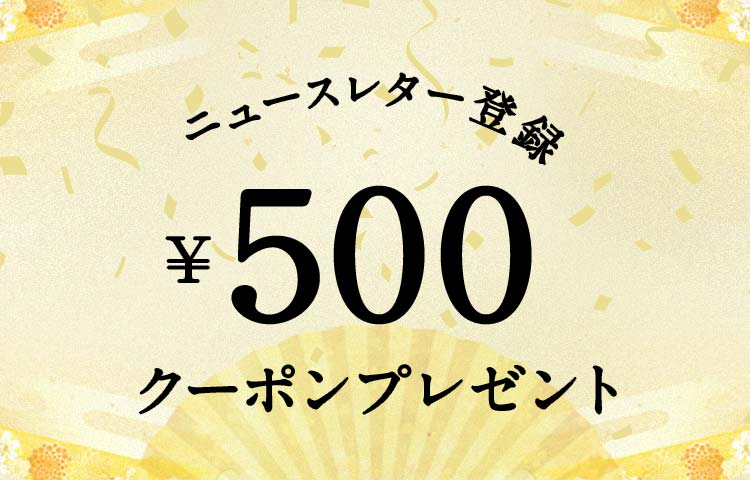Patterns
Brocade with Pine Needle Pattern
To burn tinged fallen leaves strewn in the woods and to warm "Sake" wine' is a famous Chinese poem which describes an Oriental taste of enjoying drinking in nature. It is amidst the landscape and human feelings peculiar to Japan that fallen pine needles, scattered in fields and hills i n late autumn, have come alive as lovely works of Nature.
Budo Karakusa-mon Nishiki(Brocade with Grapevine Arabesques)
The original of this reproduction is a weft-patterned brocade in twill weave, with a design in yellow on a purple ground.
The pattern consists of a flower with four double-petals and points in the center as a main motif, surrounded in an octagonal form with vine arabesques with leaves, grapes and scrolls in a symmetrical arrangement. The curve of the arabesques is exquisite and the composition is well-balanced, though somewhat complicated, showing the high level of the graphical presentation of the time.
Undoubtedly, it is the most graceful masterpiece among the large number of fabrics of the similar design preserved in the Shōsōin - the wooden storehouse at Tōdaiji temple, Nara, housing several thousand precious ornamental and fine art objects from the 8th century, many of which were donated by Empress Kōmyō, consert of Emperor Shōmu (701-756).
Kiku Momi(Brocade with Design of Crumple in Chrysanthemum Shape)
The pattern of this brocade is originated from a design of an artistic work on paper lacquered with silver and gold entitled to Ō-kiku-momi, meaning crumple in chrysanthemum-shape, having been
preserved in Kōetsu-ji temple in Kyoto made by Hon ,ami Kōetsu who lived in the Momoyama period (1573A.D.-1630A.D.) during which time the Japanese culture had ever been flourished, and was called a genius of all kinds of art.
This brocade is skillfully woven leaving the abstract and the three-dimentional effect of the original work.
Ryoka-mon Nishiki(Brocade of Roundels and Diamonds Design)
Circular and cross designs of conventional floral scrolls in yellow were arranged on a purple ground in the original weft-patter ned brocade, which was found on the borders of the screens preserved in Shosoin Repository, Nara Prefecture, decorated with Tang Dynasty, Chinese ideographs formed with birds'feathers. This type of design reveals the characteristics of the flourishing days of the Nara period, the 8th century Japan.
Soun-ji Bundai-gire(Cloth Covering of a Writing Desk at Soun-ji Temple)
The design of this brocade is originated from a cloth which covered a writing desk and an inkstone case, preserved at Soun-ji Temple in Hakone, Kanagawa Prefecture, belonged to Sogi (1421-1502), the master of the "linked verse" type of poetry called renga, and is now designated as an Important Cultural Property. The original is a silver brocade with a ground filled with silvered paper stripes and patterned with a bine arabesque design of wild pink in colored yarns of green, maroon, and slight rouge.
Adding a modern device to the original brocade, the new brocade is woven with our technique leaving the exquisite harmony of tastefulness and luxury of the original material.





































